Monday October the 8th
Just a few miles up the mountain on the south side of Big Bear Lake we found a hidden treasure: Snow Forest Trail. Short and Sweet best describes this trail which wanders past tall Redwoods and Pines and dips down to lush wetland areas. This was an unexpected treat!
Click on the photos below for a larger image.
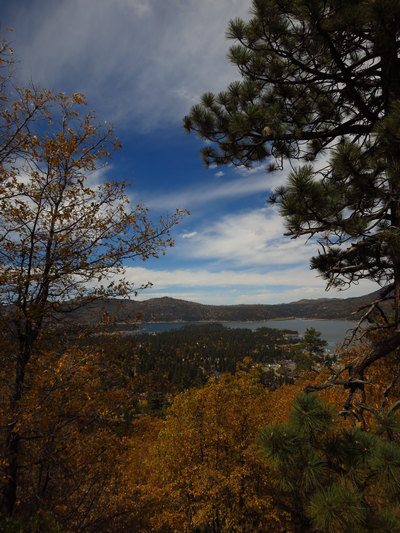
We took USFS road 2N08 to get to the unmarked trail head. Several of the pull outs afforded nice views of Big Bear Lake.

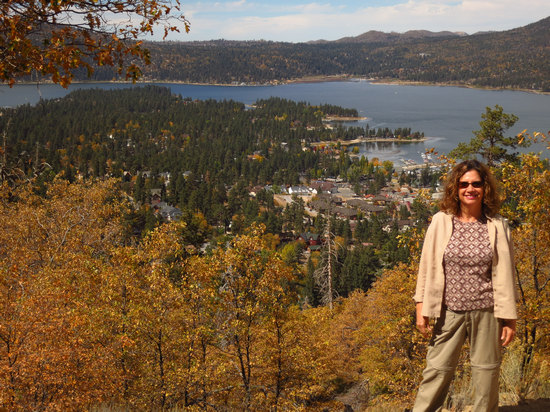
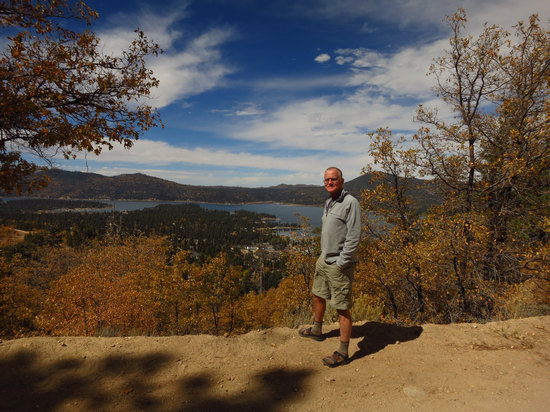
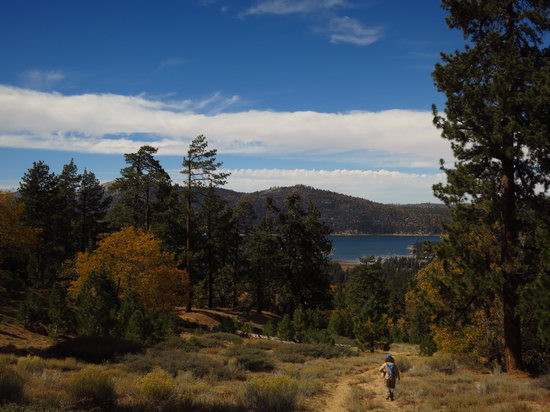
Initially we ended up on the wrong trail. But it gave us more big trees and big views so that was OK.
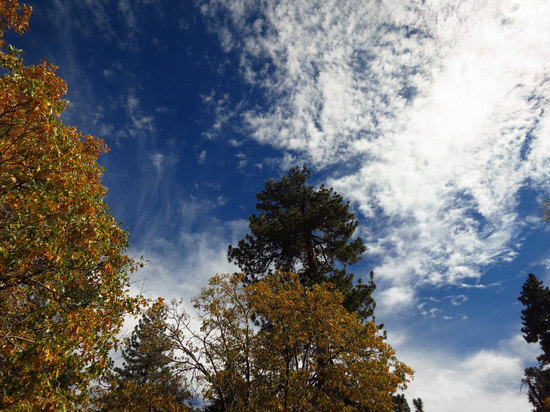
The clouds were quite dramatic and it was nice to see them.
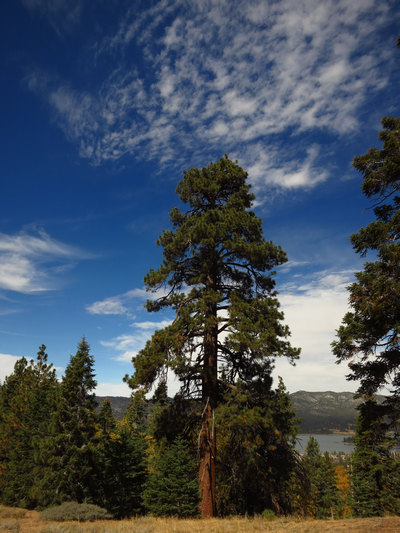
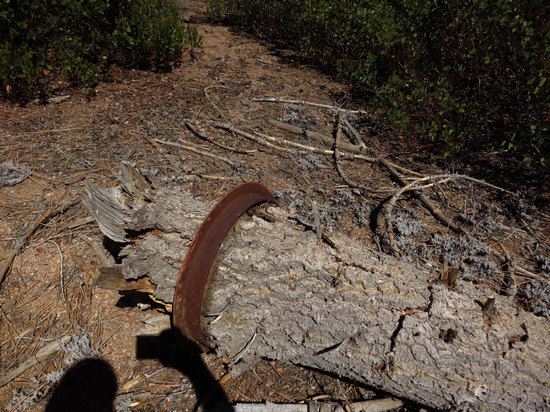
We backtracked to look for the right trail and found this - a pine which had grown up through a metal collar of some type. As the tree grew it was girdled and died. Weird.
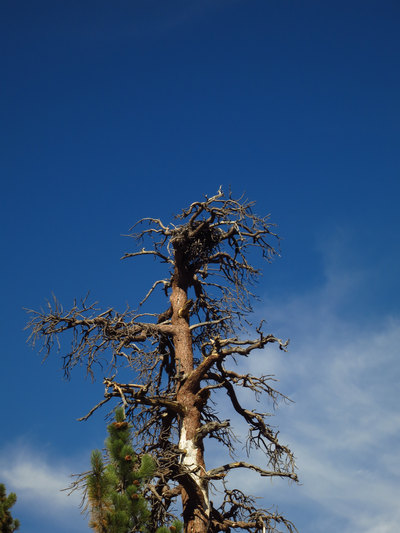
We speculated about whether this might be an eagles nest or not and whether it was still being used.
Pairs usually start a new nest in a living tree, though there are often dead trees ("snags") nearby where they have a view all around when they're resting near the nest. The healthier the tree, the better. Eagles use and keep adding sticks to their nests for years and years. One well-studied Ohio nest was used for 34 years, until the tree finally blew down. Sometimes a tree with an eagle nest dies after many years. If the tree remains standing, the eagles often remain there as long as their nest is secure. But the healthier the tree is to start with, the longer it will last.

We had no idea we would be seeing Redwoods on this hike. There were not many, but we saw specimens both large and small.
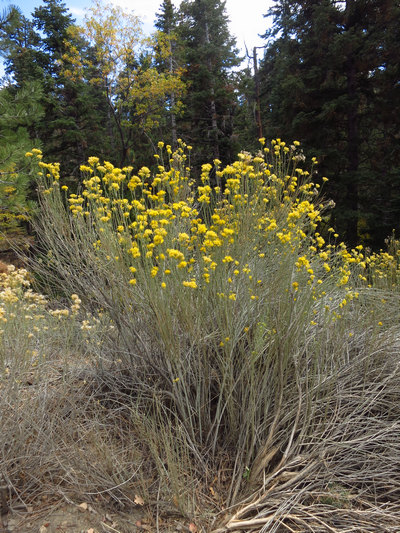
The unmarked trail ended at the same road we came in. We saw this Rabbitbrush (Chrysothamnus viscidiflorus.)
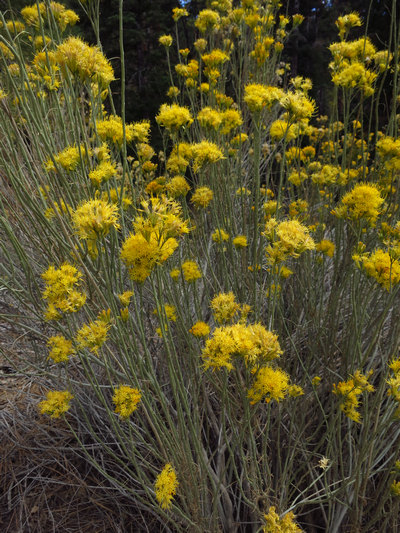
Chrysothamnus viscidiflorus is a species of shrub in the daisy family known by the common names yellow rabbitbrush and green rabbitbrush. It is native to western North America, from British Columbia to California to Nebraska, where it grows in sagebrush and woodland habitat. It grows easily in alkaline and saline soils, and thrives on soils that are rich in calcium.[1] It rapidly establishes in disturbed habitat, including burns, flooded washes, and rockslides, so it is a valuable shrub for revegetating damaged land such as overgrazed rangeland and abandoned mining areas.
Source: WikiPedia
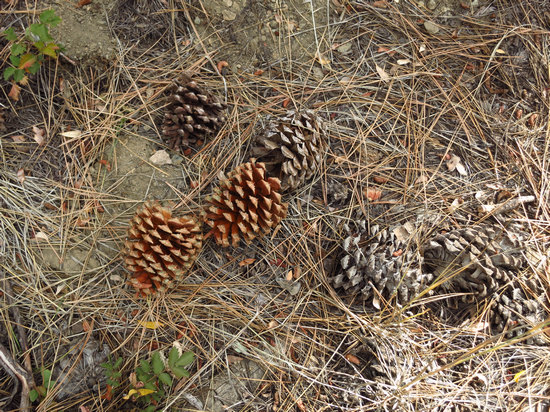
One thing you will see in these here parts is pine cones. Millions of them. Here can be seen both this years and last years cones.
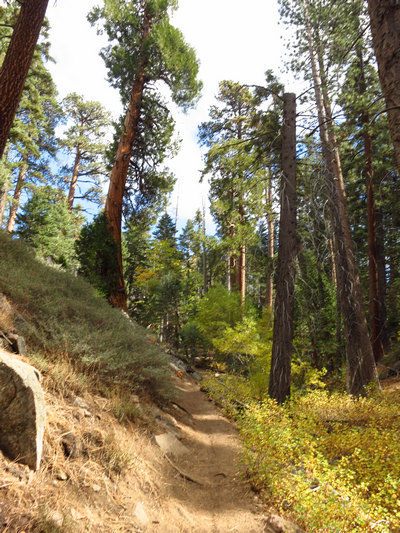
Here is the small footprint trail we wandered on. On the left is one of the Redwoods on the right a broken snag. We saw quite a few trees, some of them 2-3 feet in diameter which were down or snapped off.
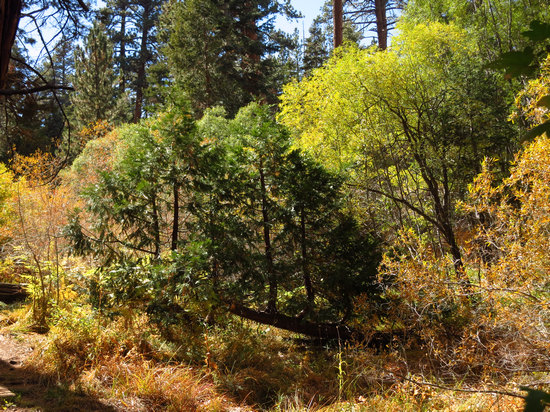
This young Redwood had fallen over. Then the new branches reoriented to grow vertical like a row of little trees.
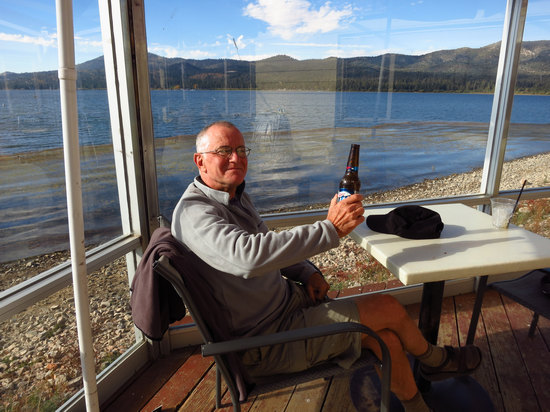
The end of the hike! Cindi suggested B's as a good place to relax and enjoy the lake. Nice spot.
And that was the last hike for me here at Big Bear. It has been great seeing this area. And Cindi has made me feel most welcome here. Thanks, Cindi. It's been fun!
Today I will head north to the Mojave area and settle in there for few nights. The original plan was to go to Pinnacles National Park. But, of course that is closed.
Until then ...